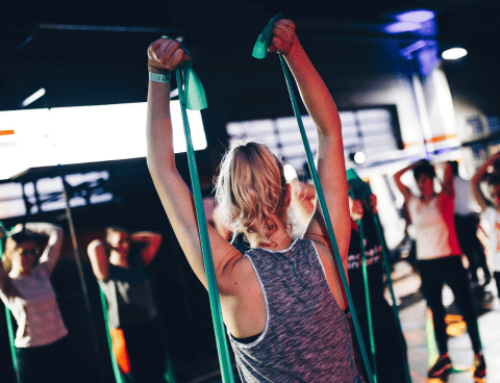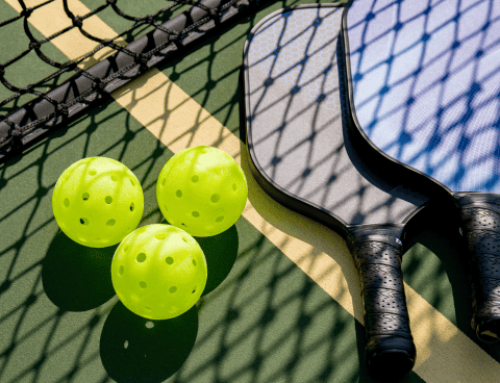5 External Cues That Elicit Great Exercise Form (And Why They Work So Well)
Coaching is a blend of both art and science.
Those who apply science-based methodologies in a practical fashion yield the greatest results.
It is not how much one knows, or how much others think one knows, it is how well one is able to articulate key points to others.
A coach can spend a lifetime in academia gaining unlimited knowledge but remain sub-par when it actually comes time to actually do some coaching due to their inability to apply the science.
Most athletes do not care about the conclusions of a recent meta-analysis on angular knee velocity during maximum sprinting. They simply care about getting better and want you to help get them there.
Great coaches are able to study and comprehend the science, then filter it and provide to their athletes in a digestible, actionable manner. Coaches who use excessive verbiage or who try to impress their athletes with complicated vernacular don’t do much to get athletes better.
Save the detailed analytics of every data point your GPS measurement recorded for other strength and conditioning nerds like myself. Make your practice easy to understand and immediately actionable for your athletes.
The manner in which we coach extends far beyond spreadsheets and exercise demos. It’s heavily rooted in the way we speak to our athletes.
A large portion of the information athletes receive comes by way of internal cues, those that involve their own body and its movement.
For example, “extend your hips, knees and ankles” would be an internal cue meant to elicit triple extension.
While internal cues may be effective to some degree, I believe there’s a better way.
In an article published in the Strength and Conditioning Journal, author Nick Winkelman (PhD and Head of Athletic Performance for the Irish Rugby Football Union) contends that sprint performance increases when athletes receive external cues versus internal cues.
Unlike internal cues, external cues rely on an athlete’s relation to objects outside and in conjunction with their own body. For example, “push the ground away” would be one example of an external cue.
Winkelman goes on to outline many studies which have found external cues to produce superior training and performance outcomes compared to internal cues.
Channeling one’s energy towards something that does not distract the athlete from the process they are trying to execute but rather assists it is what makes external cueing so effective.
Athletes no longer have to focus on placing their body in all the right positions to make the perfect movement. Instead, they are outcome focused and let the motion occur as it may through repeated technical practice efforts.
However, not just any external cue will do. For an effective external cue to be formulated, it needs to include either a distance, direction, or description.
My Favorite Cues
It can be daunting to change the way in which we coach and relay our messages to the athlete.
However, one effective way of doing so can include creating cue lists. At every session I encourage my assistant coaches and interns to take notes on cues that work well so we can return to them later.
Weeks, months and seasons later, coaches will find that they have a rather lengthy list of effective external cues that can be utilized.
My advice is to find as many as possible for the most commonly coached movements (e.g., Squats, Deadlifts, Presses), because not every athlete will respond the same to each cue. In these situations, you may need to pull out a few different ones to get your point across.
Below I have listed a few of my go-to cues for some basic movements. I should note that these are adapted and borrowed from several of the very best coaches I’ve ever been able to work with in my career experience:
Single-Leg RDLS: “Get as long as you can, attempting to reach wall to wall.”
This cue gets the athlete to maintain a balanced posture with no lordotic or kyphotic back positions, as well as place adequate stretch on the hamstring muscles.
Sprints: “Push the ground away from you. Imagine you’re making the earth spin underneath you.”
Sprints are all about the amount of force one can apply into the ground. Thus, this cue helps the athlete focus on really driving into the ground rather than shorting their range of motion to move the legs faster, which is a common mistake.
Bench Press: “Drive yourself through the bench and imagine the bar like a stick you want to snap in half.”
This cue helps the athlete engage their lats, which is essential to a successful Bench Press. It also helps them maintain the five key contact points: head, upper back, hips and both feet.
Bird Dogs: “Imagine there’s a glass of water on your back you don’t want to spill.”
A major issue with many preparatory movements like the Bird Dog is athletes will rush through them with no consciousness of stability. By imagining a glass of water on the back, the athlete has to maintain a tight posture and center their focus on the task at hand.
Lateral Shuffles: “Imagine you’re in a low-ceiling tunnel where you can’t stand up.”
All too often, athletes waste energy on vertical displacement when shuffling. Giving them the mental constraint of being in a tunnel, they are more likely move laterally in an efficient manner.
I encourage coaches to experiment with a variety of external cues and keep track of which ones they find work best! And remember, it’s always good to have multiple cues meant to elicit the same result for the same exercise or drill, as every person won’t interpret or act upon a cue the same way.
Photo Credit: Antonio_Diaz/iStock
READ MORE:
RECOMMENDED FOR YOU
MOST POPULAR
5 External Cues That Elicit Great Exercise Form (And Why They Work So Well)
Coaching is a blend of both art and science.
Those who apply science-based methodologies in a practical fashion yield the greatest results.
It is not how much one knows, or how much others think one knows, it is how well one is able to articulate key points to others.
A coach can spend a lifetime in academia gaining unlimited knowledge but remain sub-par when it actually comes time to actually do some coaching due to their inability to apply the science.
Most athletes do not care about the conclusions of a recent meta-analysis on angular knee velocity during maximum sprinting. They simply care about getting better and want you to help get them there.
Great coaches are able to study and comprehend the science, then filter it and provide to their athletes in a digestible, actionable manner. Coaches who use excessive verbiage or who try to impress their athletes with complicated vernacular don’t do much to get athletes better.
Save the detailed analytics of every data point your GPS measurement recorded for other strength and conditioning nerds like myself. Make your practice easy to understand and immediately actionable for your athletes.
The manner in which we coach extends far beyond spreadsheets and exercise demos. It’s heavily rooted in the way we speak to our athletes.
A large portion of the information athletes receive comes by way of internal cues, those that involve their own body and its movement.
For example, “extend your hips, knees and ankles” would be an internal cue meant to elicit triple extension.
While internal cues may be effective to some degree, I believe there’s a better way.
In an article published in the Strength and Conditioning Journal, author Nick Winkelman (PhD and Head of Athletic Performance for the Irish Rugby Football Union) contends that sprint performance increases when athletes receive external cues versus internal cues.
Unlike internal cues, external cues rely on an athlete’s relation to objects outside and in conjunction with their own body. For example, “push the ground away” would be one example of an external cue.
Winkelman goes on to outline many studies which have found external cues to produce superior training and performance outcomes compared to internal cues.
Channeling one’s energy towards something that does not distract the athlete from the process they are trying to execute but rather assists it is what makes external cueing so effective.
Athletes no longer have to focus on placing their body in all the right positions to make the perfect movement. Instead, they are outcome focused and let the motion occur as it may through repeated technical practice efforts.
However, not just any external cue will do. For an effective external cue to be formulated, it needs to include either a distance, direction, or description.
My Favorite Cues
It can be daunting to change the way in which we coach and relay our messages to the athlete.
However, one effective way of doing so can include creating cue lists. At every session I encourage my assistant coaches and interns to take notes on cues that work well so we can return to them later.
Weeks, months and seasons later, coaches will find that they have a rather lengthy list of effective external cues that can be utilized.
My advice is to find as many as possible for the most commonly coached movements (e.g., Squats, Deadlifts, Presses), because not every athlete will respond the same to each cue. In these situations, you may need to pull out a few different ones to get your point across.
Below I have listed a few of my go-to cues for some basic movements. I should note that these are adapted and borrowed from several of the very best coaches I’ve ever been able to work with in my career experience:
Single-Leg RDLS: “Get as long as you can, attempting to reach wall to wall.”
This cue gets the athlete to maintain a balanced posture with no lordotic or kyphotic back positions, as well as place adequate stretch on the hamstring muscles.
Sprints: “Push the ground away from you. Imagine you’re making the earth spin underneath you.”
Sprints are all about the amount of force one can apply into the ground. Thus, this cue helps the athlete focus on really driving into the ground rather than shorting their range of motion to move the legs faster, which is a common mistake.
Bench Press: “Drive yourself through the bench and imagine the bar like a stick you want to snap in half.”
This cue helps the athlete engage their lats, which is essential to a successful Bench Press. It also helps them maintain the five key contact points: head, upper back, hips and both feet.
Bird Dogs: “Imagine there’s a glass of water on your back you don’t want to spill.”
A major issue with many preparatory movements like the Bird Dog is athletes will rush through them with no consciousness of stability. By imagining a glass of water on the back, the athlete has to maintain a tight posture and center their focus on the task at hand.
Lateral Shuffles: “Imagine you’re in a low-ceiling tunnel where you can’t stand up.”
All too often, athletes waste energy on vertical displacement when shuffling. Giving them the mental constraint of being in a tunnel, they are more likely move laterally in an efficient manner.
I encourage coaches to experiment with a variety of external cues and keep track of which ones they find work best! And remember, it’s always good to have multiple cues meant to elicit the same result for the same exercise or drill, as every person won’t interpret or act upon a cue the same way.
Photo Credit: Antonio_Diaz/iStock
READ MORE:











